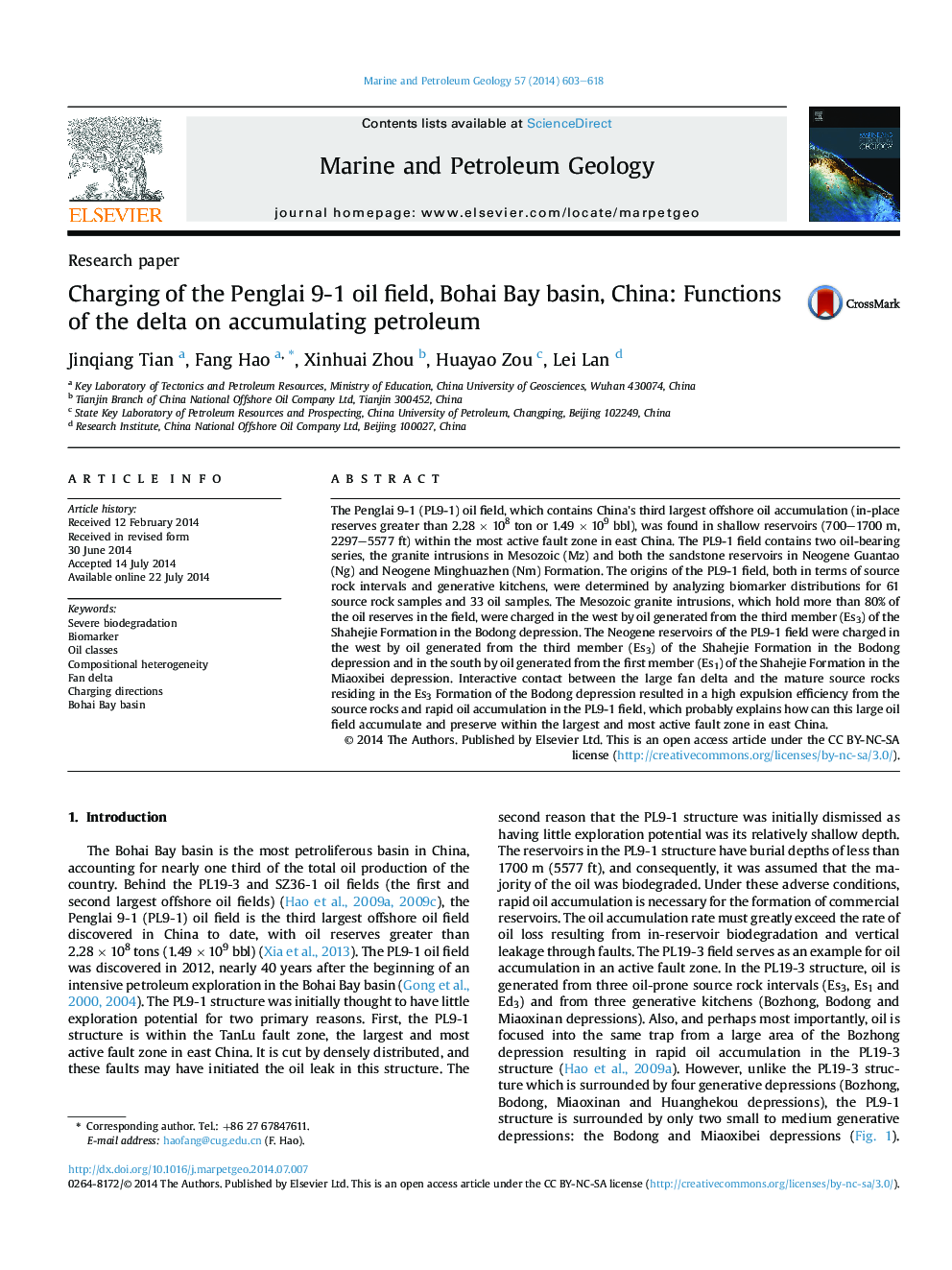| Article ID | Journal | Published Year | Pages | File Type |
|---|---|---|---|---|
| 6435409 | Marine and Petroleum Geology | 2014 | 16 Pages |
â¢Gammacerane/C24 Tet is not affected by biodegradation.â¢PL9-1 field has two filling direction.â¢The large fan delta enhanced the expulsion efficiency of source rocks.
The Penglai 9-1 (PL9-1) oil field, which contains China's third largest offshore oil accumulation (in-place reserves greater than 2.28Â ÃÂ 108Â ton or 1.49Â ÃÂ 109Â bbl), was found in shallow reservoirs (700-1700Â m, 2297-5577Â ft) within the most active fault zone in east China. The PL9-1 field contains two oil-bearing series, the granite intrusions in Mesozoic (Mz) and both the sandstone reservoirs in Neogene Guantao (Ng) and Neogene Minghuazhen (Nm) Formation. The origins of the PL9-1 field, both in terms of source rock intervals and generative kitchens, were determined by analyzing biomarker distributions for 61 source rock samples and 33 oil samples. The Mesozoic granite intrusions, which hold more than 80% of the oil reserves in the field, were charged in the west by oil generated from the third member (Es3) of the Shahejie Formation in the Bodong depression. The Neogene reservoirs of the PL9-1 field were charged in the west by oil generated from the third member (Es3) of the Shahejie Formation in the Bodong depression and in the south by oil generated from the first member (Es1) of the Shahejie Formation in the Miaoxibei depression. Interactive contact between the large fan delta and the mature source rocks residing in the Es3 Formation of the Bodong depression resulted in a high expulsion efficiency from the source rocks and rapid oil accumulation in the PL9-1 field, which probably explains how can this large oil field accumulate and preserve within the largest and most active fault zone in east China.
